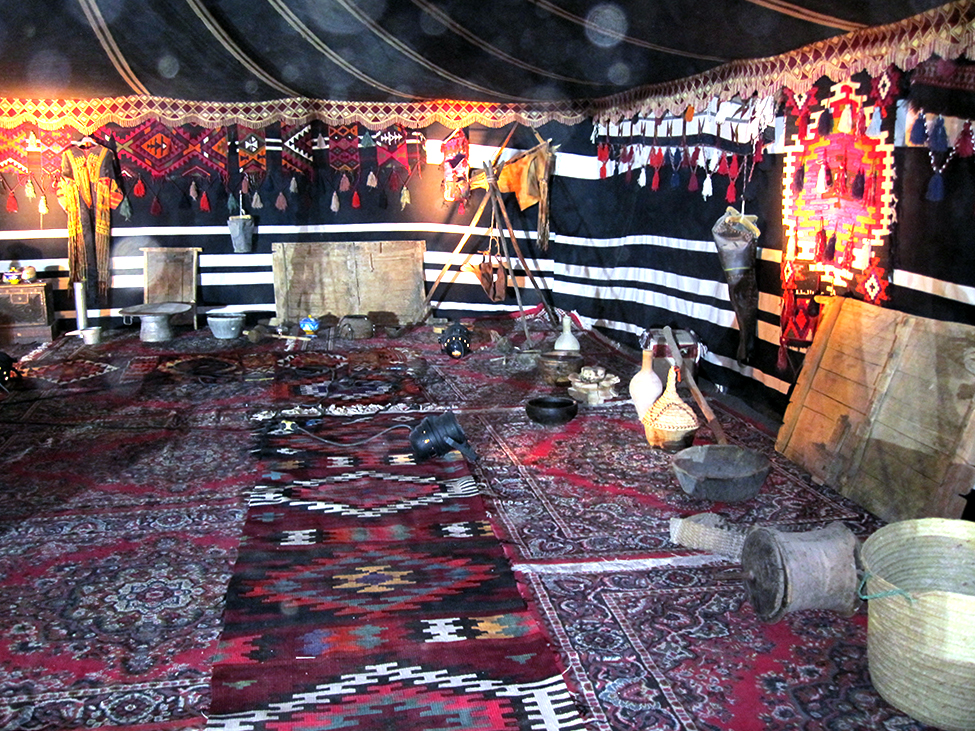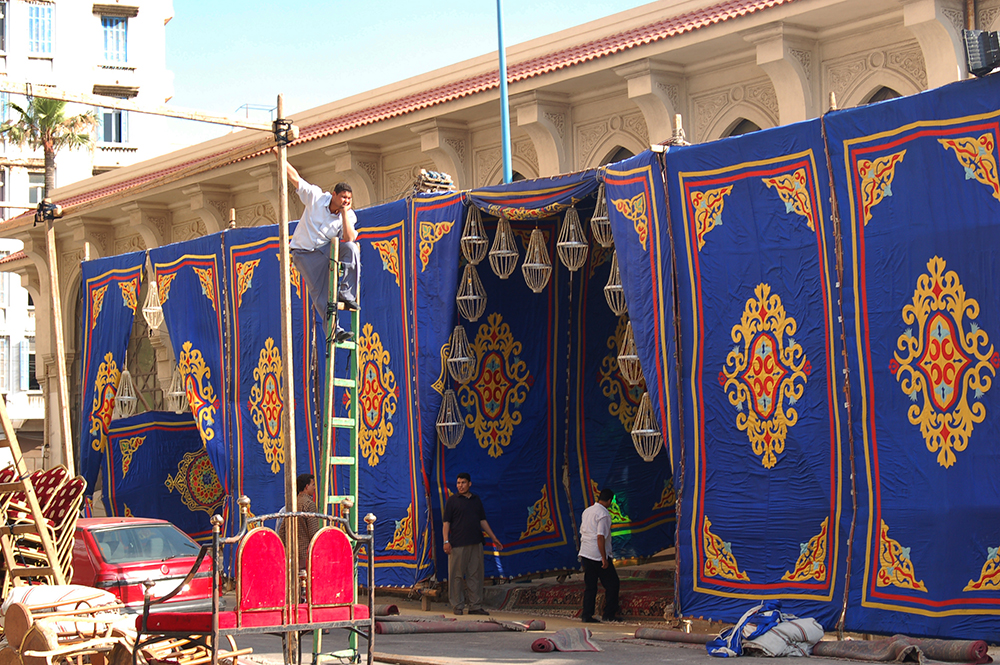
Lesson Summary
This lesson will introduce students to traditional tent making in Egypt. Students will learn how to analyze the principles of art and design found in Egyptian tent panels through diagramming. Students will compare tent making in Egypt with tents in other parts of the world.
Required Supplies / Preparation
All lesson necessary lesson material is included through links. Links to optional access to feature length film on Kanopy (often free through libraries) and book for purchase.
Activity 1: blank paper and colored pencils, crayons, or markers
Activity 2: Print off images from links, markers or colored pencils. Advanced students may prefer to use Photoshop or InDesign.
Questions: paper or word processor (MS Word, GoogleDocs)
Objectives
- Integrate visual information (e.g., in charts, graphs, photographs, videos, or maps) with other information in print and digital texts.
- Integrate and evaluate multiple sources of information presented in diverse formats and media (e.g., quantitative data, video, multimedia) in order to address a question or solve a problem.
- Understand historical and cultural context for tent makers in Egypt.
- Compare how tent designs vary in differing parts of the world.
- Recognize the elements of design in tent textiles.
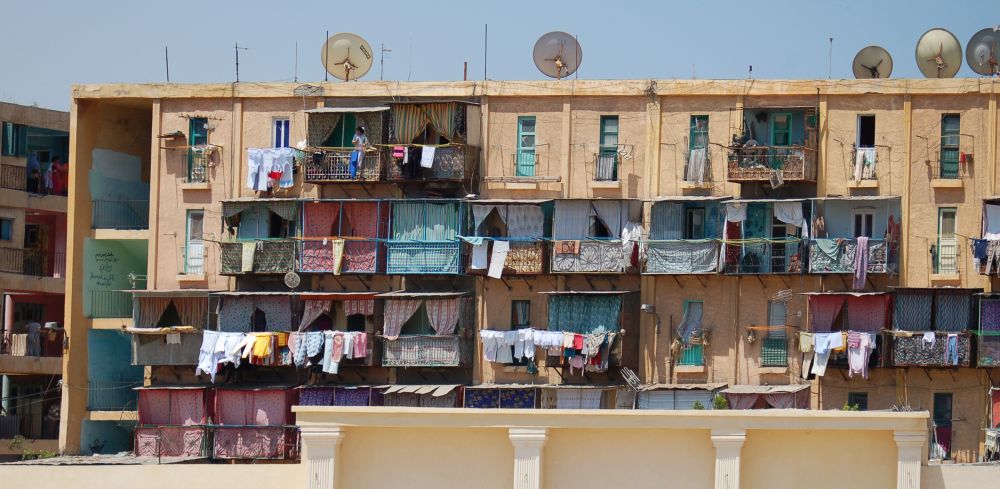
Resources
Select one of the following to learn about Tent Makers in Cairo:
- Narrated slide show (00:14:16) https://drive.google.com/file/d/1CkUGrawExdi6u1kRp5SVBR5gE6nGyZ8G/view
- Watch the film (01:38:29) https://www.kanopy.com/product/tentmakers-cairo-0 Many libraries offer free access to Kanopy.
- Read the book El Rashidi, Seif, and Sam Bowker. 2018. The tentmakers of Cairo: Egypt’s medieval and modern appliqué craft. https://www.amazon.com/Tentmakers-Cairo-Egypts-Medieval-Appliqu%C3%A9
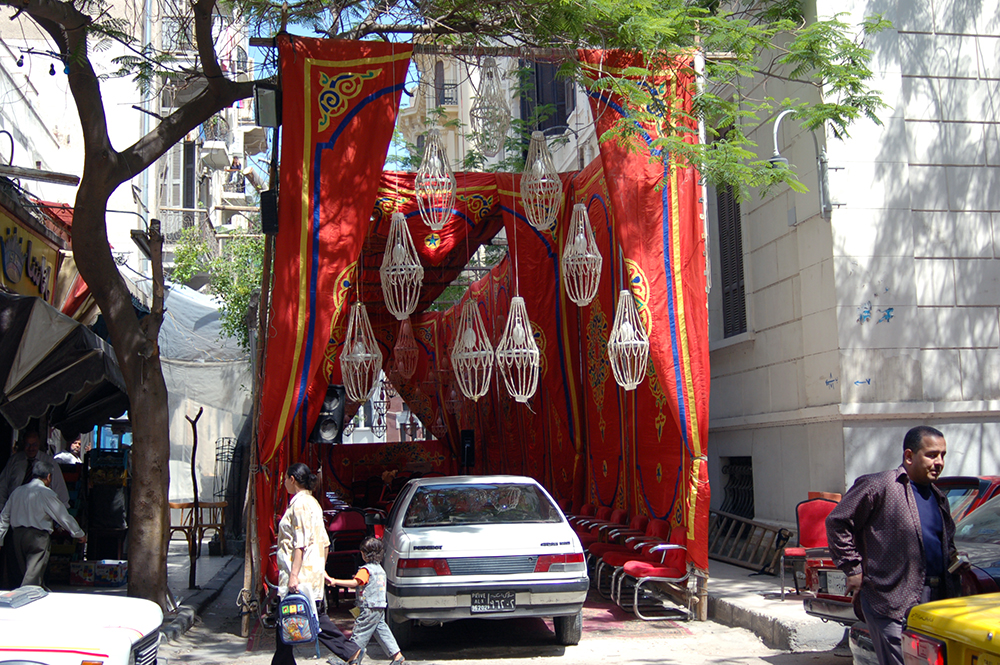
Egypt is one of many cultures which make tents as an art form. Read one or more of the following articles about tent making in another part of the world. Describe how they are similar and different.
- Sustainability and Modern Gers in Ulaanbaatar https://www.npr.org/sections/goatsandsoda/2018/03/04/589271101/to-fight-pollution-hes-reinventing-the-mongolian-tent
- The Art of Tent Bands in Central Asia https://www.rferl.org/a/1075865.html#:~:text=Both%20are%20an%20integral%20part,arid%20steppes%20of%20Central%20Asia.
- Overview of Types of Tents Around the World https://kamui-outdoor.com/traditional-tents/
- Tibetan Nomadic Tents https://www.tibettravel.org/tibetan-people/tibetan-nomadic-tents.html
- Blackfoot tipis https://www.thevintagenews.com/2016/07/18/native-american-tipi-2/
- Nenet, Komi and Khanty Reindeer Skin Tents (00:25:04) WARNING – some content may not be suitable for all viewers – some scenes of processing reindeer carcasses https://www.youtube.com/watch?v=Xi80xrE3MkI
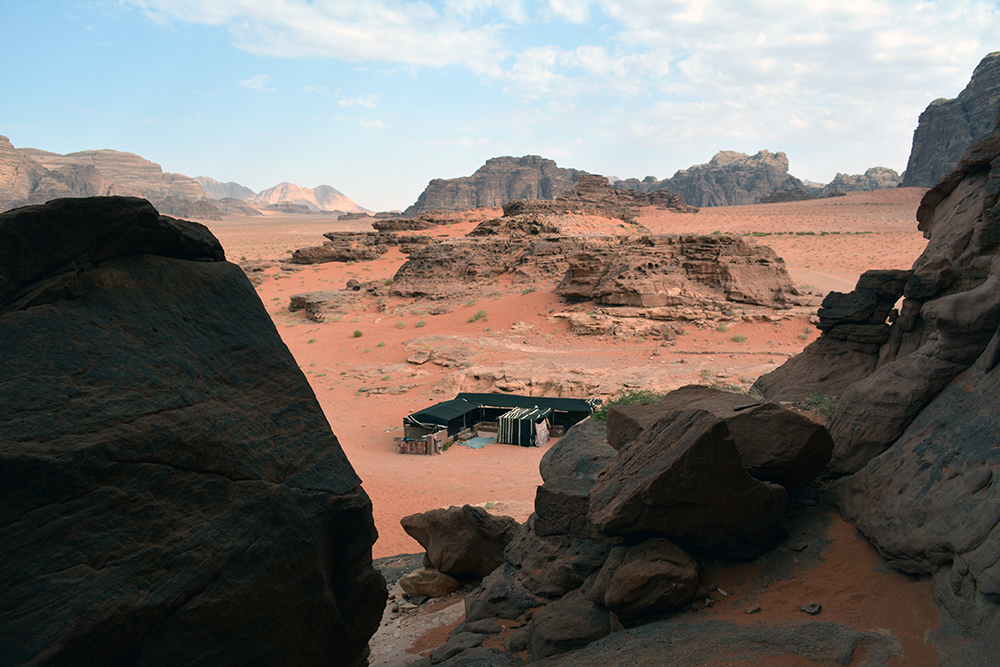
Activities
Select one or more of the following activities
- Drawing for younger students: draw and color your own tent panel design. Use one of the fabric designs in the slide show/film/book for inspiration. Fill the entire sheet of paper.
- Drawing and analysis for older students: select three or more tent panels and print off images of the patterns http://islamicartsmagazine.com/magazine/view/khayamiya_khedival_to_contemporary_the_tentmakers_of_cairo/.
- Examine the ways the patterns are similar and different.
- What colors do they use? Are they similar or contrasting? Are there many colors or only a few?
- Are they symmetrical? If so, are they symmetrical horizontally, vertically, diagonally, or all?
- What shapes are used?
- How does the design use lines?
- What is the scale of the elements? Large? Small? Some large elements with many smaller elements?
- Do the designs create a texture? If so, describe it.
- Is there hierarchy within the design? Is one element bigger, brighter, or given the most important position in the design?
- How is repetition used?
- Label the design elements on the print outs of the tent panel design. Elements of design an art may include: Line, Shape, Form, Color, Space, Texture, Value, Light, Shadow, Balance, Emphasis, Symmetry, Movement, Pattern, Repetition, Proportion, Rhythm, Variety, Unity. Not all elements will be found in every example.
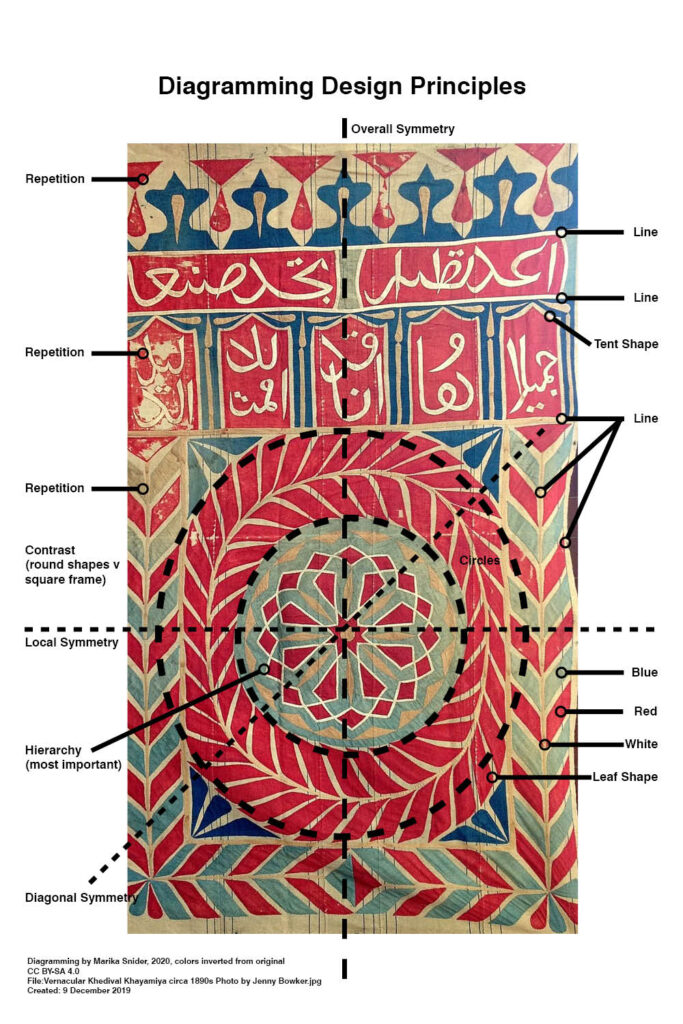
Questions
- How do tent designs differ in different parts of the world?
- How do people decorate the insides of tents?
- Describe the part of the city where tent makers work in Cairo?
- What are some of the challenges tent makers face?
